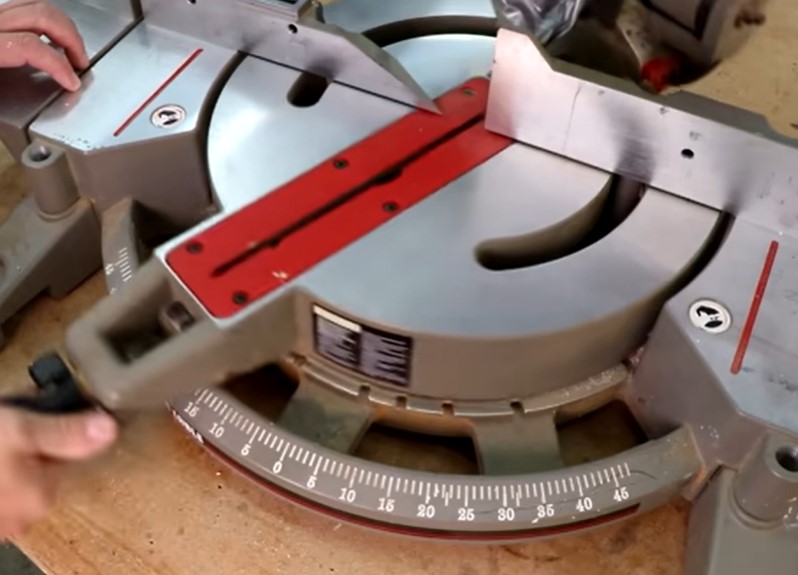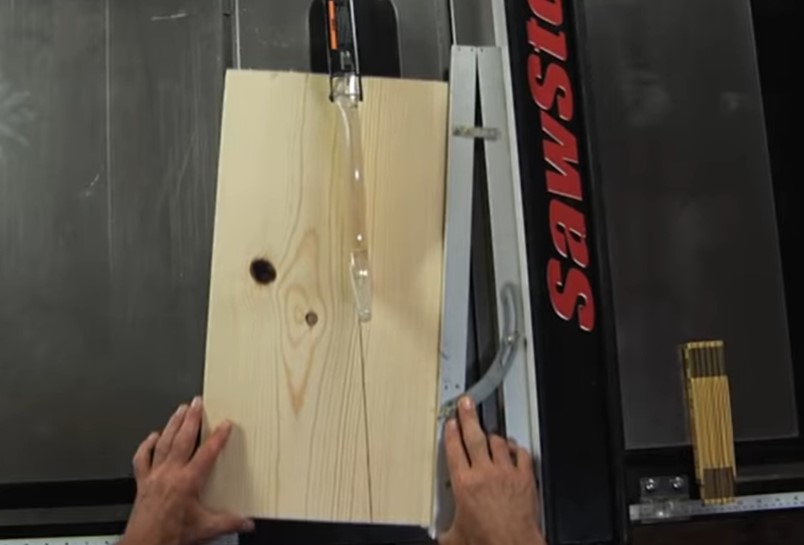When it comes to woodworking, table saws are considered indispensable tools. They are a workhorse, with the ability to rip bigger, and the bulk of wood in the shortest time. For years it has been a very popular tool for professional woodshops.
Miter saws are a relatively newer addition to woodworking. They are extremely good at making specialty cuts and have become a staple in the trim carpentry industry.
Having both of these tools can be a game changer if you are a committed woodworker. However, if you are unsure which one to choose first, a miter saw or table saw, this guide can certainly help.
Today we’ll evaluate miter saw vs. table saw to help you decide which one you should buy first based on the type of project and the level of skills you have. So, without further ado, let’s get started!
Miter Saw Vs Table Saw: Factors To Consider
When miter saw and table saw both have their unique usability, choosing one has become a daunting task for woodworkers. Yet, if you consider the following elements, you will quickly realize which one is most important to you.
Portability
Some table saws have wheeled stands to allow them to be rolled from one place to the other, but the majority will be stationary, either with a built-in cabinet or bolted solid steel legs. As a result, table saws are typically heavy (up to 300 lbs.) and unwieldy.
Miter saws, on the other hand, are lightweight (50 to 60 lbs. ). You can load this machine into the back of your pickup or truck of your car and transport it to your desired workstation. You can also make your miter saw stationary by bolting it to a countertop.
Keynote: Unlike a table saw, a miter saw can be used for projects outside your workshop.
Precision
When using a table saw, you have to guide your woods on its table and against a fence. You will roll the wood into the blade, and the amount of pressure you apply may vary. This can create slightly jagged areas on your board’s cut edge. If you are cutting woods for large projects (storage sheds for example) this slight imperfection may not create a big issue.
However, when precision is required such as for trim work, picture frames or crown molding miter saw will be a necessity. Their fences are often supported by clams to hold your board firmly, and keep it stable, and straight during the entire cut. No rolling work will be required!
Keynote: When precise cuts are vital, use a miter saw.
Angular Cuts
Miter Saw makes cutting angles a piece of cake. With the swiveling head, you can make any intricate cuts for installing trim or crown molding. No surprise, miter saws are a common tool in the trim carpentry industry. In fact, the term ‘Miter’ implies joining two pieces at a 90° angle. Take the corners of a picture frame as an example.

With table saws, you cannot create such complex cuts, with the required level of precision even when you buy additional accessories. You must hold the board firmly at the desired angle, and maintain it until it finishes running through the snipping blade, which can be quite a challenge. This can increase the likelihood of kickback, hence the risk of injuries.

Keynote: Miter saws are great for angled cuts.
Bevel Cuts
Apart from cutting wood flat, at various angles, miter saws can also be tilted for creating sloped edges at the end of a board edge. This is particularly important when you need bevel angles between trims for effortless corner jointing.
This can also be achieved by adjusting the table saw blade under the table. Again this requires years of expertise, professional carpenters might have the necessary skills, but for a newbie cutting bevels using a table saw will be just as much difficult as cutting angles.
Keynote: Miter saws outperform table saws when it comes to cutting bevels.
Rip Capacity
Table saws are an excellent tool for cutting sizable wood blocks, such as 4-ft by 8-ft plywood sheets. Thanks to the flat table, it gives the users the support they need to control their pieces as they feed them into the spinning blade, positioned at the center of the table.
On the other hand, miter saws feature a narrow base at the front of a moveable head with its spinning blade. This tool is designed primarily for cutting angles at the ends of wood strips such as siding planks or trim boards.
Keynote: Table saws are better at cutting large pieces of wood.
Length of Cut
Another aspect that separates a table saw from a miter saw has to be the width of the wood they can cut. Because table saw blades are stationary and pieces are pushed into it they can cut boards of any length.
On the other hand, a miter saw is operated by manually lowering a spinning blade, so it can only cut as much as the blade allows them to do. Miter saw blades are available in 8, 10, and 12-inch widths. Sliding miter saws however can be used for cutting wider materials. Thanks to the handle, you can pull it outward to cut pieces up to 16 inches.
Keynote: A miter saw cannot make a cut that’s longer than the width of the blade.
Risk Of Injuries
No power tool can guarantee 100% safety while operating. Following the manufacturer’s instructions strictly will lower the risks, but when it comes to injuries table saws are far more dangerous than miter saws.
It’s not difficult to understand that the potential for injuries will be much higher pushing an item towards a rapidly spinning blade vs. lowering the blade onto the item using a handle. Studies have revealed that over 30,000 table-saw injuries occur annually, whereas miter saws accidents account for only 6,800.
Keynote: A table saw is one of the most dangerous home power tools.
Versatility
Table saws are less efficient at making intricate cuts, but they offer a lot of versatility to users who routinely work on larger projects. The extra power and larger blades can be extremely useful in a professional woodshop. In addition, most table saws include miter gauges.
If you can learn to use them, you can produce angular cuts, probably not as perfect as you’d expect, but will work fine.
Keynote: Table saws are more versatile than miter saws.
Price
Table saws are more expensive in terms of price. A good table saw with a built-in cabinet can cost you up to $2,800. If you are serious about woodcraft, this will be a worthy investment. However, if you are a beginner, a portable benchtop table saw will give you the best bang for your buck. They are available at a cheaper price ranging from $200 to $500.
The price of a miter saw can also vary depending on the blade size and type. A sliding miter saw, for example, will cost more (up to $1,900) than a standard non-sliding machine. A 10-inch model will be more expensive ($300 to $600) than a compact 7-¼ inch option ($100 to $400).
Keynote: For professional woodworkers, table saws will be a worthwhile investment.
Read Also:
- Miter Saw Vs Circular Saw: Which One Is The Most Useful?
- What Is The Difference Between An Orbital Jigsaw And A Regular Jigsaw?
- Which Saw Should I Use For DIY Projects?
Miter Saw Or Table Saw: Which One Should You Buy First?
Table saws complete a professional workshop and allow the users to build woodworking projects at scale. However, if you want to get started in woodworking, then it’s best to start off with a miter saw.
Miter saws are the most basic, yet very useful tool for beginners. And, if you don’t know how to use a miter saw, then it could be dangerous to buy a table saw until you learn how to use a miter saw first.
A miter saw has a blade that rotates on an axis. This allows you to easily make 90-degree angles. The blade can be adjusted so that it makes 45-degree angles. They have a lower risk of kickback and don’t require advanced knowledge to make these cuts. Sometimes professionals do make trips outside of their shop, mostly for common rip cuts. And a bulky table saw is certainly not going to help.
Overall, both miter saws and table saws are effective in their respective roles. If you are a professional woodworker and you aren’t pushed for space, try investing in both. If you are a home carpenter, table saws might be too expensive. In the end, it’s not a question of which tool is better but which one suits your work and available space.
FAQs for Miter Saw Vs Table Saw
What is the difference between a miter saw and a table saw?
A miter saw is primarily designed for making precise angled crosscuts and miter cuts, whereas a table saw is a versatile tool used for making straight rip cuts, crosscuts, and bevel cuts. Table saws have larger cutting capacities and are commonly used for cutting large sheets of wood.
Which one should I buy first, a miter saw or a table saw?
The choice between a miter saw and a table saw depends on your specific needs and the types of projects you plan to undertake. If you primarily need to make angled cuts or miter cuts, a miter saw would be a good choice. On the other hand, if you need to make a variety of cuts, including long rip cuts or bevel cuts, a table saw would be more versatile and suitable as a first purchase.
Can a miter saw replace a table saw?
While a miter saw is a valuable tool for making angled and miter cuts, it cannot fully replace a table saw. A table saw offers greater flexibility and a wider range of cuts, including rip cuts, bevel cuts, and more. If you have a limited budget or space, a miter saw can be a good starting point, but a table saw will eventually become a valuable addition to your workshop.
What are the main advantages of a miter saw over a table saw?
The primary advantages of a miter saw over a table saw are its ability to make precise angled cuts, its portability (especially if you choose a compound or sliding miter saw), and its ease of use for crosscuts and miter cuts. Miter saws are great for projects that involve trim work, framing, or furniture making that require precise angled cuts.
What are the main advantages of a table saw over a miter saw?
Table saws offer several advantages over miter saws. They are more versatile and can perform a wider range of cuts, including rip cuts, bevel cuts, dado cuts, and more. Table saws also have larger cutting capacities, allowing you to handle larger workpieces. Additionally, they can be equipped with various accessories and attachments to enhance their functionality, such as a miter gauge for making angled cuts.
Related Posts:
- Reviews Of The 10 Best Affordable Circular Saw
- Reviews Of The 10 Best Jigsaw for the Money
- Reviews Of The 10 Best Reciprocating Saw Under $100
Recent Posts
Woodworking in 2025 is all about efficiency, precision, and smart technology. Whether you're a beginner or a seasoned craftsman, having the right tools can make all the difference. Here are the top 7...
Ever tried drilling into a piece of wood only to end up with a splintered mess or a wobbly hole? Yeah, it's more common than you think. Wood might seem like an easy material to work with, but...

